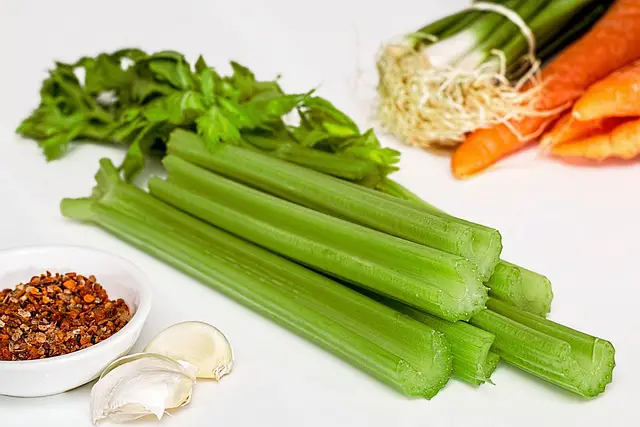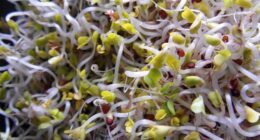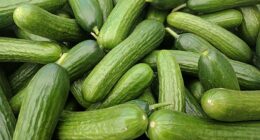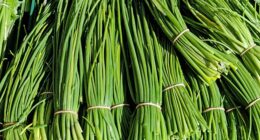Celery and parsley are different plants: celery has crisp, edible stalks and a distinct flavor, while parsley has leafy green foliage with a fresh herbal taste.
TL;DR Celery Vs. Parsley
Celery is known for its crunchy texture and mild taste that adds depth to dishes like soups and stir-fries. It is also a low-calorie vegetable packed with vitamins and minerals.
Parsley brings a fresh and vibrant flavor to meals with its slightly peppery taste. It is commonly used as a garnish or added to salads for an extra burst of freshness. Parsley is also rich in antioxidants and nutrients that contribute to overall health.
Celery
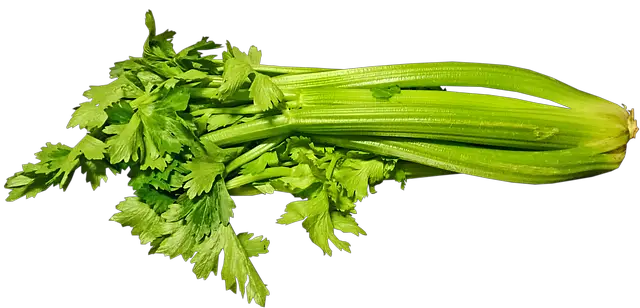
Celery, scientifically known as Apium graveolens, is a crunchy and refreshing vegetable that belongs to the Apiaceae family. It has long green stalks with pale leaves, often used in various culinary dishes for their unique flavor and texture.
Parsley
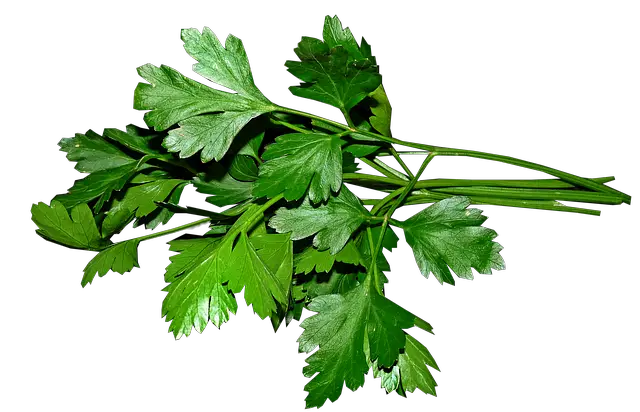
Parsley is a versatile herb that adds freshness and flavor to various dishes. Known for its vibrant green color, parsley belongs to the Apiaceae family, which includes carrots and celery. It has a mild yet distinctive taste that can enhance the overall taste of any recipe.
Celery Vs. Parsley – Key differences
| Aspect | Celery | Parsley |
|---|---|---|
| Plant Description | Green vegetable with long, fibrous stalks and leafy tops | Herb with curly or flat leafy foliage |
| Flavor | Mild, slightly salty flavor | Fresh, herbal taste |
| Culinary Use | Used as a vegetable in salads, soups, and as a snack | Used as an herb to add flavor to dishes |
| Edible Parts | Stalks and leaves are edible | Leaves are primarily used |
| Nutritional Content | Low in calories, source of vitamins and minerals | Rich in vitamins A, C, and K, and minerals |
| Aroma | Mild, slightly aromatic | Strong and fresh aroma |
| Popular Dishes | Waldorf salad, soups, stir-fries | Garnishing, sauces, and seasoning |
| Plant Family | Apiaceae (Umbelliferae) family | Apiaceae (Umbelliferae) family |
| Growth Habit | Biennial plant (usually grown as an annual) | Biennial plant (usually grown as an annual) |
| Appearance | Long, cylindrical stalks with leafy tops | Green, curly or flat leafy foliage |
Celery Vs. Parsley – Benefits
Benefits of Celery
- Hydration: High water content helps in staying hydrated.
- Nutrients: Rich in vitamins A, C, K, and minerals like potassium.
- Digestion: Contains dietary fiber, aiding digestive health.
- Antioxidants: Contains compounds with antioxidant properties.
- Blood Pressure: May help lower blood pressure.
Benefits of Parsley
- Vitamins: Rich in vitamins A, C, K, and folate.
- Antioxidants: Contains compounds with antioxidant effects.
- Anti-Inflammatory: May have anti-inflammatory properties.
- Kidney Health: Known for diuretic properties, supporting kidney function.
- Oral Health: Can aid in freshening breath and promoting oral hygiene.
Both celery and parsley provide various nutrients and potential health benefits, making them valuable additions to a balanced diet.
Celery Vs. Parsley – Origin
Origin of Celery
Celery (Apium graveolens) is believed to have originated in the Mediterranean region, specifically in areas such as Egypt and Greece. It has a long history of cultivation, dating back to ancient times, and was used by the ancient Egyptians and Greeks for both medicinal and culinary purposes.
Origin of Parsley
Parsley (Petroselinum crispum) is native to the Mediterranean region as well, with origins in southern Europe and western Asia. It has a history of use in various cultures, including ancient Greek and Roman civilizations, where it was used as a culinary herb and also as a symbol of victory and honor.
Both celery and parsley have ancient origins and have been valued for their culinary and medicinal properties in different parts of the world for centuries.
Celery Vs. Parsley – Appearance
Appearance of Celery
Celery has long, thick, fibrous stalks that are pale green in color. The stalks are often joined at the base and have leafy tops with serrated edges. The leaves are bright green and resemble small, feathery branches.
Appearance of Parsley
Parsley has dark green, curly or flat leafy foliage with a vibrant appearance. The leaves are divided into multiple segments and have a textured, slightly glossy surface. The plant can grow up to a height of around 8 to 12 inches.
Celery’s elongated, fibrous stalks and leafy tops contrast with parsley’s dense, multi-segmented leaves, providing unique characteristics to each plant.
Celery Vs. Parsley – Flavour and aroma
Flavor and Aroma of Celery
Celery has a mild and slightly salty flavor, with crisp and crunchy texture. Its taste is often described as refreshing and subtle, making it a popular ingredient in salads, soups, and various dishes. The aroma of celery is mild and slightly aromatic, complementing its delicate taste.
Flavor and Aroma of Parsley
Parsley has a fresh, herbal flavor with a slight bitterness. Its taste is vibrant and bright, adding a burst of freshness to dishes. The aroma of parsley is strong and distinct, characterized by its green and grassy notes, which make it a popular choice for garnishing and enhancing the flavors of various cuisines.
The flavor and aroma of celery and parsley are quite different, reflecting their unique culinary uses and contributions to various dishes.
Celery’s mild and refreshing taste complements its crunchy texture, while parsley’s vibrant herbal flavor and strong aroma make it an excellent herb for adding freshness and depth to a wide range of culinary creations.
Celery Vs. Parsley – Nutrition value
Nutrition Value of Celery (Per 100g)
- Calories: 16 kcal
- Carbohydrates: 3.3g
- Fiber: 1.6g
- Protein: 0.7g
- Fat: 0.2g
- Vitamin A: 449 IU
- Vitamin C: 3.1 mg
- Vitamin K: 29.3 mcg
- Potassium: 260 mg
Nutrition Value of Parsley (Per 100g)
- Calories: 36 kcal
- Carbohydrates: 6.3g
- Fiber: 3.3g
- Protein: 2.97g
- Fat: 0.79g
- Vitamin A: 4213 IU
- Vitamin C: 133 mg
- Vitamin K: 1640 mcg
- Potassium: 554 mg
Parsley has higher calorie content, more protein, and significantly greater amounts of vitamins A, C, K, and potassium compared to celery.
Both are nutritious, but parsley stands out as a rich source of essential vitamins and minerals, making it a valuable addition to a balanced diet.
Celery Vs. Parsley – Usage
Usage of Celery
Celery is a versatile vegetable commonly used in various culinary applications, such as:
- Salads: Added raw to green salads or potato salads for a refreshing crunch.
- Soups and Stews: Used as a base flavor in soups and stews or as a garnish.
- Stir-Fries: Added to stir-fried dishes for texture and flavor.
- Snacks: Served with dips or peanut butter as a healthy snack option.
- Juices and Smoothies: Blended into juices or smoothies for a nutritious boost.
Usage of Parsley
Parsley is primarily used as an herb to enhance the flavor and appearance of dishes, such as:
- Garnishing: Sprinkled on top of various dishes as a decorative element.
- Seasoning: Added to sauces, dressings, and marinades for its fresh taste.
- Herb Blends: Used in herb blends like fines herbes or bouquet garni.
- Pesto: Blended into pesto sauces for a unique twist.
- Flavoring: Enhancing the taste of meat, fish, and vegetable dishes.
Celery’s crunchy texture and mild flavor make it suitable for a range of dishes, while parsley’s fresh taste and vibrant appearance elevate the flavors of various cuisines as a garnish or seasoning.
Image Credits
Featured Image By – Steve Buissinne from Pixabay
Image 1 By – Beverly Buckley from Pixabay
Image 2 By – Beverly Buckley from Pixabay
